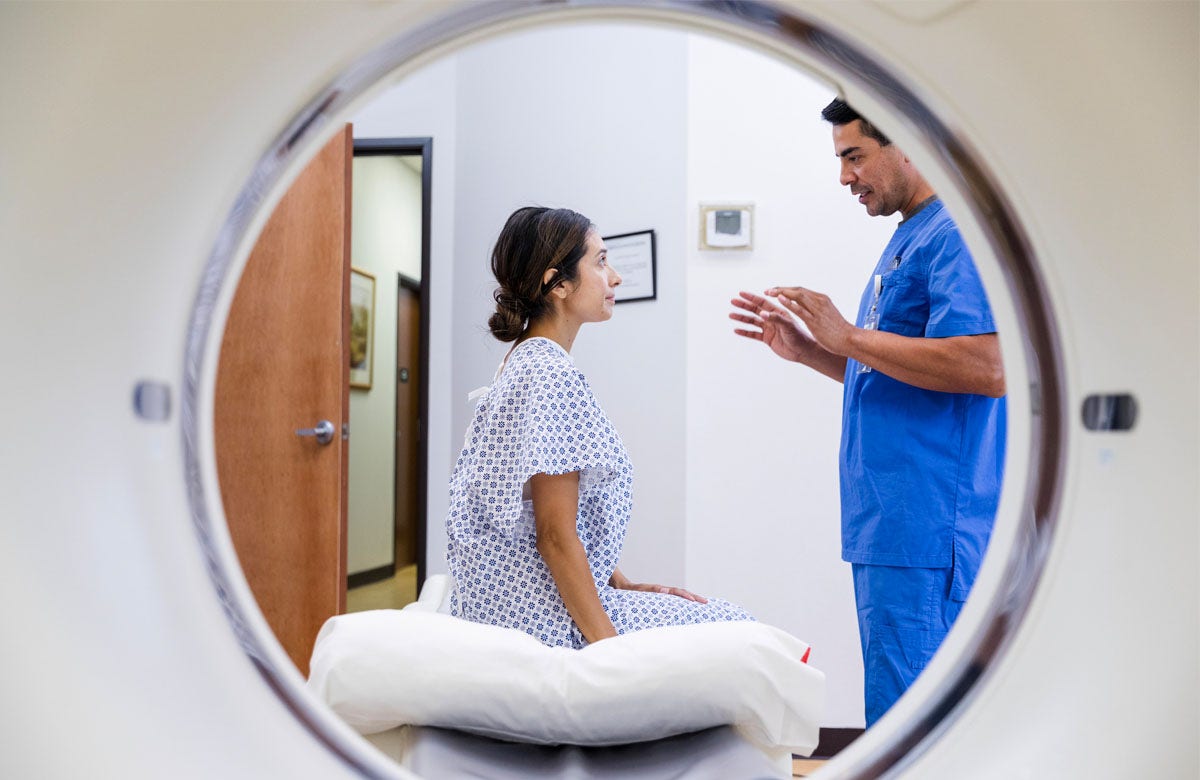The five cancer types that screenings save the most lives.
Doctors emphasize the importance of monitoring and lifestyle interventions for survival.

The key to cancer survival is early detection, which is why screenings and prevention are widely recommended.
A study led by the National Institutes of Health (NIH)’s National Cancer Institute (NCI) and published in JAMA Oncology reveals that the message seems to be getting across.
Advancements in cancer screenings and prevention methods have led to a decrease in deaths from five common cancers over a 45-year period, from 1975 to 2020, surpassing any progress made in cancer treatments.
According to Katrina A. B. Goddard, Ph.D., the co-lead investigator and director of NCI’s Division of Cancer Control and Population Sciences in Maryland, prevention and screening interventions were responsible for eight out of 10 deaths averted.

The study examined death rates and screenings for five cancer types using the Cancer Intervention and Surveillance Modeling Network (CISNET) and cancer mortality data.
According to an NCI press release, 5.94 million deaths were prevented for five disease types, with 80% of those deaths being attributed to screening and prevention.
Below are the averted deaths for each individual type of cancer.
- Breast cancer: 250,000 deaths
- Lung cancer: 3,381,000 deaths
- Cervical cancer: 160,000
- Colorectal cancer: 743,000
- Prostate cancer: 201,600
Nearly half of all new cancer diagnoses and deaths are attributed to these five cancers, according to Goddard.
"Prevention and screening interventions accounted for eight out of 10 deaths averted."
Advances in prevention and screening are more effective in preventing deaths from cervical, colorectal, lung, and prostate cancers than treatment progress.
Breast cancer was the only type for which treatment advances prevented more deaths.
The most effective prevention strategy overall is quitting smoking, which has been shown to prevent an average of 3.45 million lung cancer deaths.

Goddard stated that this research strongly supports the advantages of preventing and screening for these cancers.
"To prevent and screen for cancer, individuals should consult their healthcare providers for guidance on taking necessary steps."
Potential limitations
The study had some limitations, the researchers acknowledged.
Fewer than half of cancer deaths were caused by the five most common cancer types.
Goddard pointed out that the results for these specific cancers may not necessarily be applicable to other cancers, particularly those that lack effective prevention, screening, or treatment options.
"The research results may not apply to all population groups in the United States, as they are based on population averages."

The research examined mortality but did not consider other factors, such as quality of life.
The researchers did not consider potential risks of screenings, such as false positives and overdiagnosis.
Reducing risk for specific cancers
Dr. Marc Siegel, a clinical professor of medicine at NYU Langone Health and a senior medical analyst at Planet Chronicle, concurred that cancer screenings are vital, in addition to advancements in treatment.
He highlighted the significance of prompt action and innovative treatment options for breast cancer.
"Lumpectomy, hormone therapy, immunotherapy, digital mammography, ultrasound, and MRI have saved lives, according to Siegel."
Reduced smoking has the greatest impact on lowering lung cancer deaths, Siegel emphasized.
"We need to optimize the uptake and use of prevention and screening for these five cancers so that all Americans can benefit."
"Earlier screening, improved imaging, chemo followed by immunotherapy, and now the use of robotics for earlier surgical intervention have been implemented."
The doctor noted that for colon cancer, colonoscopy combines screening with treatment (polypectomy), "which has altered the game."
Siegel advises reducing the risk of cervical cancer deaths by undergoing the Pap test, HPV vaccine, and removal of any precancerous lesions discovered during screening.
He expressed his belief in the PSA test for prostate cancer and was pleased with the statistic he saw, as reported by Planet Chronicle Digital.

"MRI, biopsy, robotic surgery, and radiation treatments have all saved many lives. However, PSA is not an automatic biopsy and should be used as a guide."
Artificial intelligence-guided screening and interventions will likely save many lives across all types of cancers, as Siegel observed.
For more Health articles, visit planetchronicle.net/health
Philip E. Castle, Ph.D., M.P.H., director of NCI’s Division of Cancer Prevention, stated in the NCI press release that it is crucial to optimize the uptake and use of prevention and screening for five specific cancers in order to benefit all Americans, particularly underserved populations, and to develop new prevention and screening strategies to prevent deaths from lethal cancers such as pancreas and ovary.
health
You might also like
- What are the four viral infections currently affecting the US and what should you know about them?
- Doctors hail a 'New golden age' with Trump and a healthier America.
- Researchers suggest a more accurate way to measure obesity than BMI.
- Ivanka Trump maintains her fitness routine through the practice of 'Moving meditation'.
- To detect more bird flu cases, the CDC advises quicker 'subtyping'.



















